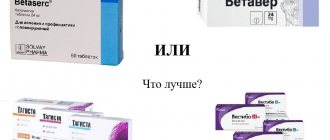Brief history, incidence of the disease
James Parkinson is a doctor who first described in detail the symptoms of this serious disease in his work “An Essay on the Shaking Palsy.” The disease was named shaking paralysis on the basis of one of its severe and typical symptoms: constant tremors of the limbs, due to which patients are often unable to fully care for themselves.
Dr. Parkinson described six people who had similar manifestations. Today there are four objective signs that allow a correct diagnosis. Of these, Parkinson accurately described three in the essay:
- tremor (trembling of the limbs) in a calm state;
- hypokinesia (decreased motor activity and limitation of movements);
- postural instability (gradual loss of balance).
A little later, the famous French neuropathologist and psychiatrist Jean-Martin Charcot identified the fourth main diagnostic criterion, adding rigidity (stiffness in muscle movements) to the existing three and naming the disease after James Parkinson.
In 1912, Dr. F. Levy described a number of intracellular inclusions in the central nervous system, which are one of the features of the pathology. In 1919, Russian doctor and researcher K.N. Tretyakov found that the main “goal” (or target) of all neurodegenerative changes in PD is the midbrain, in particular, its substantia nigra.
The 60s of the last century became a decisive stage in the search for methods of treating Parkinson's disease. It was then that the drug Levodopa appeared, which experts use to this day.
The disease has a prevalence of 100 - 200 recorded clinical cases per 100,000 people. The main criterion for morbidity is middle or old age (young people rarely get sick). Among patients 60 years of age and older, the incidence rate sometimes reaches 1 to 2%. Some experts believe that PD is more common in males.
It is known that the main biochemical link in the pathogenesis of Parkinson's disease (PD) is a lack of dopamine production as a result of degeneration of dopaminergic nigrostriatal neurons. Following the discovery of the role of dopamine deficiency in the basal ganglia in 1960, the metabolic precursor of dopamine, levodopa, was proposed for the treatment of PD. Levodopa has been used for PD for more than 40 years and is the “gold standard” for the treatment of this disease [18]. Dopamine replacement therapy has the most pronounced symptomatic effect and affects the main motor disorders. Moreover, the patient’s response to the prescription of levodopa in the form of regression of motor symptoms on the UPDRS scale by 25-30% from the initial level is one of the diagnostic criteria for Parkinson’s disease itself [5].
Since 1985, drugs have been used in clinical practice that are a combination of levodopa and a peripheral DOPA decarboxylase (DDC) inhibitor (benserazide or carbidopa), which inhibits the peripheral decarboxylation of levodopa. This increases its bioavailability by 5 times and significantly reduces the number of possible side effects. Currently, there are several dosage forms of levodopa on the domestic market: standard, extended-release, instantaneous, and three-component forms consisting of levodopa, a DDC inhibitor, and a COMT inhibitor (Table 1).
In the Russian Federation, a multicenter open study is being conducted on the effectiveness of levodopa (duodopa) gel, which is administered intestinally to ensure a constant concentration of the drug in the blood and long-term physiological stimulation of striatal receptors.
Levodopa significantly improves daily activity and quality of life of patients, reduces mortality in PD [11] and increases the duration of stages 2-4 of the disease [20]. Levodopa slows down the disability of patients; in addition, of all antiparkinsonian drugs, it is best tolerated by patients with PD, especially the elderly [16].
The list of main levodopa drugs is presented in table. 2.
The pharmacotherapeutic effect of levodopa drugs is determined by the number of surviving neurons of the substantia nigra and striatal DA receptors. The disadvantages of levodopa include: low bioavailability, inconsistent absorption in the gastrointestinal tract, short half-life in plasma, pulsating, non-physiological stimulation of DA receptors with the progressive death of nigrostriatal neurons, a gradual decrease in the pharmacotherapeutic effect over the course of the disease, the development of motor fluctuations and drug-induced dyskinesias. , as well as suspected neurotoxicity.
Revealed neurotoxicity of levodopa in cultured dopaminergic neurons in vitro
led to the emergence of the so-called “levodopaphobia” phenomenon among doctors and patients [14].
But under experimental conditions in vivo
in animals, levodopa leads to accelerated recovery of the function of nigrostriatal neurons and an increase in the production of neurotrophic factors [12, 20, 21]. In addition, the very fact of increased life expectancy and survival of patients taking levodopa, compared with those patients who did not take DSS, contradicts data on the possible neurotoxicity of levodopa drugs. Moreover, the double-blind, placebo-controlled ELLDOPA study found that PD patients treated with 150, 300, or 600 mg of levodopa in combination with a DDC inhibitor for 40 weeks had better UPDRS scores after discontinuation of the drug after 2 weeks (“washout”). period"), compared with patients receiving placebo [8]. These study results not only exclude a negative effect of levodopa on the course of PD, but also suggest a possible modifying effect of levodopa, leading to a decrease in disease progression.
At the beginning of therapy, the effect of levodopa with three doses remains stable throughout the day. But after some time, as the neurodegenerative process progresses and neurons die, the duration of action of a single dose of levodopa decreases and, as a result, fluctuations in the effect appear throughout the day - motor fluctuations. Fluctuations are a consequence of a transient response to levodopa, lasting only a few hours. A change in the response to levodopa is also manifested in the manifestation of dyskinesias (violent movements). After 2-3 years of constant use of levodopa, motor fluctuations develop in more than 40% of patients. On average, the risk of motor fluctuations and dyskinesias increases by 10% per year with long-term levodopa therapy [19, 21].
The following reasons for the development of motor fluctuations have been established: progressive, increasing with the course of the disease, degeneration of nigrostriatal neurons, leading to impaired ability to capture levodopa by neurons, synthesize dopamine from levodopa, impaired storage of dopamine and its gradual release into the synaptic cleft; also changes in the functional state and sensitivity of dopaminergic receptors; fluctuations in plasma levodopa levels associated with DSS administration [15].
The leading pathogenetic factor in the development of motor fluctuations is pulsating non-physiological stimulation of postsynaptic receptors in the striatum. At the initial stage of PD during levodopa therapy, the dopaminergic function of the striatum does not depend on fluctuations in the level of levodopa in the plasma, since intact intact nigrostriatal neurons “dampen” fluctuations in the level of levodopa supplied with the drug and metabolize it into dopamine. As the severity of the disease increases, their “buffer function” is lost in the striatum—the ability to accumulate and smoothly release dopamine. In the advanced stages of PD, the concentration of dopamine in the synapse depends on fluctuations in the level of levodopa in the blood: after taking the next dose, it rises sharply and then falls. Stimulation of DA receptors from physiological tonic turns into pulsating, non-physiological.
The increase in the incidence of motor fluctuations due to the duration of therapy with DOPA-containing drugs (DCS) and the level of the daily dose has led to the fact that most neurologists postpone the prescription of drugs containing levodopa to patients with PD. However, the desire to delay the start of DSS therapy leads to insufficient control of motor disorders, which worsens the quality of life of patients. Prescription of DSS should not be delayed until motor, daily and professional activities and quality of life are significantly limited.
The decision on the timing of starting levodopa therapy should be influenced by several factors: the degree of motor impairment (stage of the disease), the need to continue professional activities, the need to maintain household skills and self-care, the elderly and senile age of patients with a short life expectancy.
According to widespread practice, levodopa should be prescribed at the minimum effective dose that ensures satisfactory daily activity of the patient [2]. Data have been obtained indicating a decrease in the frequency of motor fluctuations and drug-induced dyskinesias as a result of the use of levodopa drugs in a lower dose. Currently, most doctors prescribe levodopa in a dose not exceeding 600-800 mg/day, trying to keep the dose of the initial stage of therapy (the first 4-5 years) at the level of 300-400 mg/day.
The main manifestation of motor fluctuations (fluctuations in motor activity) is the phenomenon of depletion of the effect
a single dose of levodopa, which is manifested by a decrease in the duration of action of the drug. The first sign of depletion of the effect of a single dose is deterioration in the morning after an overnight break in taking medications and by the time of taking the next dose. Motor symptoms (stiffness, rigidity, tremor, postural instability) and non-motor manifestations (vegetative, mental, sensory disorders) decrease with the onset of the next dose of levodopa.
General approaches to correcting motor fluctuations that occur in advanced stages of PD are the following:
- improving the absorption and transport of levodopa (for this it is necessary to follow the regimen of taking levodopa 40-60 minutes before meals or 2 hours after; a diet with a low protein content; restoration of normal intestinal motility);
- stabilization of levodopa levels in plasma (increasing the frequency and dose of levodopa; adding COMT inhibitors; using long-acting forms of levodopa);
- increase in the amount of striatal dopamine (use of MAO B inhibitors);
- stimulation of DA receptors (use of DA receptor agonists).
The problem of advanced stages of PD is drug-induced dyskinesia. Depending on the time of their appearance in connection with taking the next dose of levodopa, they are classified:
- for dyskinesia, peak doses that coincide with the time of maximum effect of levodopa;
— dyskinesias of the off period, appearing during the period when the next dose expires;
- biphasic dyskinesias that occur at the very beginning and end of the “on” period.
Approaches to the correction of drug-induced dyskinesias are individual, depending on the time of their occurrence in connection with taking levodopa. Multiple approaches are often used to achieve greater effect of pharmacotherapy. When choosing treatment methods, it is first necessary to determine the type of levodopa-induced dyskinesias, their clinical pattern, and their relationship with taking a single dose of levodopa. The next stage should be a review and modification of antiparkinsonian therapy: changing the dose, frequency of administration, replacing short-acting levodopa drugs with long-acting forms, prescribing antidyskinetic drugs (amantadine, clozapine), assessing the indications for functional stereotactic surgery.
W. Olanow [17] proposed the following algorithm for correcting various dyskinesias.
For “peak dose” dyskinesia
recommended:
- reduction of a single dose of levodopa;
- replacement of fast-acting forms of levodopa with long-acting forms;
- discontinuation of MAO inhibitor drugs;
- reducing the dose of levodopa and/or increasing the dose of dopamine receptor agonists;
— neurosurgical treatment.
With dyskinesia (dystonia) the dose ends
The following correction approaches are recommended:
- increasing the frequency and/or dose of levodopa medications;
- prescription of combination therapy (levodopa and long-acting dopamine agonists);
- prescription of long-acting levodopa drugs;
— prescription of COMT inhibitors;
- addition of MAO type B inhibitor;
— neurosurgical treatment;
- injection of botulinum toxin.
In the presence of biphasic dyskinesias
It is suggested to use the following methods:
— modification of the dose and frequency of taking levodopa;
- replacement of a long-acting levodopa drug with a fast-acting levodopa drug;
- increasing the dose of DA receptor agonists;
— review of COMT inhibitor prescription;
— neurosurgical method;
- subcutaneous injections of apomorphine;
- duodenal administration of levodopa.
Of the three classical forms, biphasic dyskinesias are the most resistant to therapy.
The greatest number of errors occurs in the practice of a neurologist when prescribing levodopa drugs. Often there is a peculiar fear of the doctor before prescribing levodopa; the prescription of these drugs is postponed until the appearance of pronounced motor disorders, which significantly disable patients.
To date, the question of how many times during the day the drug levodopa should be prescribed has not been resolved. Previously, it was assumed that in patients with PD at moderate stages of the disease with a stable effect of levodopa, twice a dose was sufficient; Currently, to implement the concept of longer-term constant stimulation of dopamine postsynaptic receptors in the striatum, it is more appropriate to prescribe levodopa with a larger frequency of administration to stabilize the drug level in plasma.
However, one should also caution against the practice of prescribing frequent (more than 7-8 times a day) subtherapeutic doses of levodopa, which does not provide sufficient control of motor disorders and leads to exceeding the daily dose of levodopa.
In recent years, the clinical manifestations of dysregulated dopamine syndrome in PD patients taking high daily doses of levodopa and dopamine receptor agonists have been discussed [3]. It manifests itself as a wide range of behavioral disorders with obsessive, uncontrolled, unreasonable use of high daily doses of dopaminergic drugs, which is accompanied by euphoria, a hypomanic state, appetite disturbance, unmotivated aggression, and sometimes social isolation. Risk factors for the development of this syndrome are: onset of the disease at a young age, male gender of the patient, family history of mental illness, previous alcohol abuse; as well as drug addiction, depression, gambling addiction, shopping addiction, hypersexuality and panding (complex stereotypical movements reminiscent of purposeful actions in the form of meaningless rearranging, collecting, rearranging various objects). As a rule, dysregulation syndrome is accompanied by a sharp increase in drug dyskinesias due to exceeding therapeutic daily doses [13].
Often in practice one has to deal with unjustified replacement of one levodopa drug with another, which is associated with difficulties in drug supply in a specific period of time or with pharmacoeconomic aspects of therapy. In this case, the neurologist incorrectly calculates the dose of levodopa newly prescribed to the patient, changing the frequency of administration and the size of a single dose. In addition, the doctor often transfers the patient from the standard form of the drug to a fast-acting one, causing the phenomenon of dose depletion; or the doctor prescribes a long-acting form of levodopa, not taking into account that its bioavailability is 15-30% lower than that of standard drugs. This reduces the effectiveness of pharmacotherapy and the compliance of the PD patient.
The experience of the Center for Extrapyramidal Diseases has shown that quite often replacing the original drug with a generic one leads to a decrease in the effectiveness of treatment for PD. Generics are medicines that have proven bioequivalence and therapeutic interchangeability with the original drug of a similar composition for which patent protection has expired. It is known that the price of a generic drug is significantly lower than the original drug, because Generic manufacturers do not bear the costs of developing, researching and advertising new drugs. Generics contain the same active drug substance as the original drugs, but may differ in excipients (inactive ingredients, fillers, preservatives, colorings) [1].
At the Department of Neurology of the Russian Medical Academy of Postgraduate Education and at the Center for Extrapyramidal Diseases, an open comparative study of the pharmacotherapeutic effectiveness of the original drug Nakom and the generic tidomet was conducted under naturalistic conditions.
The purpose of the study was to compare the pharmacotherapeutic effectiveness of the drug nacom and the generic tidomet in the treatment of patients with PD in the early and advanced stages of the disease.
Research materials
65 patients with PD were examined. The average age of PD patients was 72.3±5.6 years. 13 (20%) patients had an akinetic-rigid form, and 52 (80%) had a mixed clinical form of the disease. According to the rate of disease progression, patients were distributed as follows: 55 (84.6%) patients had a moderate rate of progression of PD, 2 (3.1%) had a fast rate, and 8 (12.3%) had a slow rate of progression of PD. Patients included in the study were divided into 2 groups.
First group
consisted of 40 patients with PD who had not previously received levodopa drugs (
de novo
). The group was dominated by female patients, the severity of PD did not exceed 2.5 points on the Hoehn-Yahr scale; the duration of the disease was no more than three years (Table 4).
When patients of the first group were included in the study, 20 of them were prescribed Nac (levodopa/carbidopa) at a daily dose of 375 mg;
the other 20 received the generic drug tidomet forte (levodopa/carbidopa) in an equivalent dose. Thus, both subgroups of patients who, after inclusion in the study, began to receive either Nacom or tidomet forte, did not differ significantly in age, gender and severity of the disease. The duration of PD was slightly longer in the subgroup of patients who were prescribed NAC. Second group
consisted of 25 patients with PD at advanced stages of the disease with motor fluctuations.
There was a predominance of women in this group of patients; The average duration of the disease was 11.0±1.7 years (Table 6).
The second group was divided, in turn, into 2 subgroups: the first subgroup consisted of 13 patients who received Nakom before inclusion in the study, the second subgroup included 12 patients with PD who received the generic tidomet forte. Patients with PD of both subgroups took these levodopa drugs for at least a year. Due to insufficient control of motor symptoms against the background of previously administered levodopa therapy, in patients with PD with motor fluctuations (n=25), dosages of antiparkinsonian drugs were adjusted at the first visit. Changes in the daily dose of levodopa in patients with PD before inclusion in the study and 1 month after treatment adjustment are shown in Table. 3.
The dynamics of motor and daily activity indicators were assessed one month after correction of antiparkinsonian therapy.
Research methods
Motor disorders were assessed using the UPDRS (Part 3) (Unified Parkinsons Disease Rating Scale) [7] and the Hoehn-Yahr scale [10].
Activities of daily living were assessed using the UPDRS (Part 2).
The presence of motor and autonomic fluctuations was analyzed in patients of the second group using the WOQ-9 scale [23].
The duration of action of levodopa drugs was assessed using patient self-assessment diaries, in which the patient noted the time of administration, onset of action, duration of action and time of end of the effect of a single dose of levodopa.
Cognitive impairment was assessed using the MMSE (Mini-Mental State Examination) [9], the Frontal Test Battery [6], and the Clock Drawing Test. Assessment of neuropsychological function was necessary due to conflicting data regarding the effects of dopamine imbalance in the brain on cognitive function [4].
Results and discussion
During therapy with levodopa drugs in patients with PD of the 1st group ( de novo
) a statistically significant improvement in motor performance was noted in both subgroups receiving either Nakom or Tidomet Forte. However, a more significant regression of movement disorders according to the Hoehn-Yahr scale and UPDRS (part 3) was observed in PD patients taking Nak (by 20.8 and 16.3%, respectively) compared to PD patients receiving generic drugs (by 13.0 and 10.2%). Indicators of daily activity in patients of both subgroups tended to improve (Table 5).
There were no cases of patients refusing therapy; all patients in the subgroups completed the study on time.
During therapy with levodopa in patients with de novo
there was a trend towards a decrease in the severity of cognitive deficits; a more significant improvement was found in the clock drawing test in the subgroup of PD patients taking the drug nacom (Table 9).
According to the results of the study, after adjusting the dose of levodopa (Table 3), a significant decrease in the severity of motor disorders and improvement in indicators of daily activity were noted in the second group of PD patients with motor fluctuations in both subgroups. Noteworthy is the more significant improvement in indicators of daily activity in the subgroup of PD patients receiving the drug nacom (by 18.6%) after correction of therapy (Table 7).
As a result of the study, a longer-lasting effect of a single equivalent dose of Nakoma was established in PD patients with motor fluctuations (Table 8).
The study assessed the safety of levodopa medications taken. Side effects in both groups of patients receiving nacom and tidomet forte were manifested mainly by gastrointestinal symptoms and, to a lesser extent, cardiovascular symptoms.
Thus, in the study, a significant improvement in motor activity was noted in patients with de novo
with a more significant regression of scores on the Hoehn-Yahr scale and UPDRS (part 3) in the subgroup of patients receiving the drug nacom.
In the subgroup of PD patients with motor fluctuations who received nacom, a statistically significant improvement in motor disorders and an increase in indicators of daily activity on the Hoehn-Yahr scale and UPDRS (parts 2 and 3) was established after correction of the daily dose of levodopa, as well as a longer period of action of a single dose of the drug compared with the subgroup of patients receiving tidomet.
When assessing the safety of pharmacotherapy in PD patients taking Nakoma and generic tidomet, a slight predominance of gastrointestinal and, to a lesser extent, cardiovascular side effects was noted.
Thus, full confidence in the similar effectiveness of drugs from the same generic line is possible only after conducting comparative clinical studies on groups of patients comparable in age, severity and duration of the disease.
Mechanisms of PD development
This is a synucleinopathy. When neurodegenerative processes occur, alpha-synuclein protein gradually accumulates inside cells. It is called Lewy body. At the onset of the disease, Lewy bodies can be found only in parts of the peripheral nervous system. They are localized in the plexuses of Meissner and Auerbach, located in the gastrointestinal tract. With further progression of the pathology, Lewy bodies “capture” the nuclei of the brain stem and the substantia nigra of the medulla oblongata.
Severe forms of Parkinson's disease are characterized by the fact that Lewy bodies disrupt the normal functions of the cerebral cortex. In this case, one can judge the topical distribution of neurodegenerative changes: while the substantia nigra is not affected, the clinical picture will be dominated by non-motor symptoms. As the pathology spreads, nigral neurons begin to die, which is accompanied by the appearance of motor symptoms.
Diagnosis and treatment of early stage Parkinson's disease
O.S. Levin1,2, A.V. Rosinskaya3
1Russian Medical Academy of Postgraduate Education; 2Center for Extrapyramidal Diseases (Moscow); 3Room of extrapyramidal disorders of Primorsky Regional Clinical Hospital No. 1 (Vladivostok)
Parkinson's disease (PD) is a progressive neurodegenerative disease characterized by the combination of hypokinesia with muscle rigidity and/or resting tremor, as well as later developing postural instability and a wide range of non-motor disorders, including autonomic, mental, dyssomnic and sensory symptoms. The formation of neurotoxic aggregates of the small presynaptic protein alpha-synuclein (the main component of Lewy bodies), accompanied by the death of pigmented neurons in the ventrolateral parts of the substantia nigra pars compacta, is considered to be the main link in the pathogenesis of PD. However, in recent years it has been established that only the main motor symptoms of parkinsonism correlate with damage to the substantia nigra; at the same time, the degenerative process in PD also involves other groups of neurons in various areas of the brain, as well as in the peripheral nervous system, which underlies numerous non-motor manifestations of the disease [1, 3].
Methods of conservative therapy
Motor pathologies manifested in PD are subject to constant drug therapy. There are currently no drugs that can be used as neuroprotectors, so any treatment becomes symptomatic. A number of severe cases of the disease require surgical intervention.
The groups of drugs used in the treatment of PD include:
- levodopa and its derivatives;
- ADR (dopamine antagonists);
- amantadine derivatives;
- MAO-V;
- anticholinergics.
Levodopa and its derivatives are still the main drugs in the treatment of parkinsonism, despite a number of side effects. Long-term therapy is sometimes fraught with complications. In the course of clinical and objective studies, it was found that when using monotherapy with these drugs, treatment is more effective than monotherapy with dopamine antagonists.
The use of levodopa in combination with other drugs against Parkinson's disease has become widespread practice. This tactic allows you to constantly monitor symptoms and make the necessary adjustments to therapy in a timely manner.
Levodopa is characterized by the shortest half-life of elimination from the body. For this reason, at the beginning of the disease it is always prescribed three times a day, carefully increasing the dose as the disease progresses. The mechanism of action of the drug is that it compensates for the deficiency of dopamine in the human body that occurs as a result of the death of a large number of nigostriatal nerve cells.
Dopamine is a substance that cannot pass the BBB on its own. Chemically, levodopa is a precursor to dopamine. After it enters the blood, its gradual transformation into dopamine begins. In pharmacological practice, this process is called decarboxylation.
To increase the concentration of levodopa in the brain when taking it, carbidopa or bensarazide is also used. Because it has different metabolic properties, sometimes co-administration with tolcapone or encapone increases its bioavailability.
In our country, the following combination of drugs is often used:
- levodopa;
- entkapon;
- carbidopa.
There are several dosages of levodopa. It is known that standard dosage forms of the drug are most often used, but sometimes they use a type of levodopa, which is not eliminated from the body so quickly and lasts much longer. This drug is suitable for patients with severe motor impairment.
In addition to levodopa, ADRs (or dopamine antagonists) are used in the treatment of Parkinson's disease. They act on D-2-dopamine receptors and are used together with levodopa and other drugs. Since the disease sometimes occurs in young patients, these treatment regimens are most preferable for them. Modern drugs in this group include a number of non-ergoline agonists:
- pramipexole;
- ropinirole;
- piribedil.
These medications are intended for internal use. There is also rotigotine, available in the form of an adhesive plaster. It is well suited for people who, for one reason or another, are intolerant to oral medications. The drug apomorphine, intended for injection under the patient’s skin, will soon appear on the pharmacological market.
ADRs can have a number of undesirable side effects such as nausea, vomiting, decreased blood pressure, and swelling of the extremities. In severe cases, mental disorders may occur, ranging from severe daytime sleepiness to hallucinatory phenomena.
The motor symptoms of Parkinson's disease, together with levodopa drugs, are corrected with amantadine derivatives (sulfates or chlorides). Amantadine demonstrates a mild therapeutic effect, so it is always recommended to prescribe it together with other groups of drugs. Its function is that it releases dopamine, which the body lacks, and prevents its reuptake. There is a form of amantadine intended for emergency cases: in the form of intravenous injections, when the patient experiences a severe exacerbation with severe dysphagic phenomena.
Free consultation on training issues
Our consultants are always ready to tell you about all the details!
Amantadine group drugs have few side effects. In some cases, nausea, thirst and mild swelling of the extremities may appear. There are also contraindications to its use: the drug should not be prescribed to patients suffering from dementia and hallucinatory syndrome.
MAO-B, or monoamine oxidase inhibitors, increase the concentration of dopamine in the body. These drugs include:
- rasagiline;
- selegiline.
They are used when the disease is just beginning and its symptoms are not clearly expressed. If we compare the effect of MAO-B with other drugs prescribed for Parkinson's disease, their effect is much less pronounced, so they should be prescribed as additional drugs. Recently, rasagiline is most often prescribed, as it has minimal side effects.
Among anticholinergics, patients with PD are prescribed drugs that reduce limb tremor and are resistant to other types of therapy. Typically, doctors use trihexynyphenidyl or biperiden. The substances contained in them can cause side effects: urinary retention, disorders of thinking and perception. Contraindications include glaucoma, dementia and any mental disorders accompanied by hallucinatory phenomena.
Treatment of Parkinson's disease
Maintaining motor functions depends on two main components: successful drug therapy and adequate physical activity. Drug therapy is primarily aimed at replenishing the dopamine deficiency that develops in Parkinson's disease as a result of damage to the cells of the substantia nigra. Currently, 6 groups of drugs are used to treat Parkinson’s disease:
- Levodopa (L-DOPA) is a precursor of dopamine, which, unlike dopamine itself, is able to penetrate the brain. In brain cells, as a result of an enzymatic reaction, levodopa is converted into dopamine, replenishing its deficiency and normalizing the interaction of cells in the deep structures of the brain.
- Dopamine receptor agonists have a chemical structure similar to dopamine and, due to this, are able to compensate for dopamine deficiency by stimulating its receptors.
- Monoamine oxidase B inhibitors block the breakdown of dopamine released into synapses and thereby enhance and prolong its action.
- Catechol-O-methyltransferase inhibitors suppress the breakdown of levodopa taken by the patient in the body, lengthening the period of its action.
- Amantadines block the reuptake of dopamine and norepinephrine, but their main therapeutic effect may be due to blocking glutamate receptors.
- Anticholinergics normalize the imbalanced relationship between weakened dopaminergic and enhanced cholinergic effects in the deep structures of the brain.
Unfortunately, today there is no drug that would demonstrably protect brain cells from the pathological process (i.e. have a neuroprotective effect) or promote their recovery, however, drugs such as monoamine oxidase B inhibitors, dopamine receptor agonists, amantadine have neuroprotective properties potential identified in animal and cell culture studies, but not yet confirmed in clinical trials.
The choice of drug for initial and subsequent treatment, its dose, number of doses per day, combination of drugs will be determined only by your attending physician, taking into account the individual characteristics of your disease.
All subsequent treatment should be carried out under the supervision of your doctor, who will assess its effectiveness and safety. Unfortunately, all drugs have side effects, some of which make this or that drug undesirable or contraindicated for you. The entire possible range of side effects is reflected in the instruction leaflet for the drug.
Reading this list puts some patients into a “stupor”, but one must understand that truly dangerous drugs are not allowed into clinical practice, and most of the side effects listed in the package insert are extremely rare. In any case, the benefit you get from taking the drug is usually an order of magnitude greater than the danger posed by side effects. Of course, there are exceptions to this rule, which are well known to the doctors who prescribe this or that drug to you. However, if, after reading the leaflet, you have any doubts about the safety of this drug for you, consult your doctor.
Antiparkinsonian drugs are now available that can be taken once a day, making treatment more convenient. However, you will need to take many medications several times a day, and given the need to take multiple medications at once, the treatment regimen can be quite complex.
In order to remember to take each medication at the allotted time (and this is very important for the success of treatment), we recommend purchasing a special plastic tablet with several compartments (pillbox) or simply using empty medication bottles. Depending on how often your doctor prescribed the medicine for you during the day, you write on each bottle, for example: “morning”, “afternoon”, “evening”, or “8, 12, 16, 20 hours”. You or your loved ones put the medications in these vials the night before, thus virtually eliminating the possibility of incorrect medication administration. Modern smart phones, tablets and other electronic devices can be programmed to remind you to take medications at the right time.
In some patients, antiparkinsonian medications cause nausea and sometimes vomiting. As a rule, nausea and vomiting are not caused by stomach irritation, as many patients believe, but by stimulation of a special part of the brain - the so-called “vomiting center”, which contains dopamine receptors. Within 2 weeks. The receptors in the vomiting center usually adapt to the dopaminergic drug you are taking, and the feeling of nausea goes away. To reduce nausea during the initial period of treatment or after a significant increase in the dose, the medication should be taken during or immediately after meals. Subsequently, some drugs (primarily levodopa) should be taken on an empty stomach - with this intake their effect is enhanced, occurs faster and lasts longer. If nausea prevents you from taking the prescribed medication, your doctor will advise you to take it for 2-3 weeks. domperidone (Motilium), which will block the receptors of the vomiting center, but will not increase the symptoms of parkinsonism.
Let us recall that another popular antiemetic drug, metoclopramide (Cerucal), is contraindicated in Parkinson's disease, as it can aggravate its manifestations.
Other side effects of medications, like nausea, should also not be feared, since all of them can be eliminated by changing the dose of the medication or replacing the drug by the attending physician.
Let us recall some relatively common side effects that occur when taking certain antiparkinsonian drugs.
When taking amantadine and dopamine receptor agonists, a “marbled” coloration of the skin of the forearms and hands or swelling of the legs and feet may appear. When the dose is reduced or the drug is discontinued, this side effect goes away.
Anticholinergics (such as Cyclodol) are contraindicated in patients with closed-angle glaucoma and prostatic hyperplasia, as well as in the elderly.
If the individually tolerated dose is exceeded, anticholinergics cause blurred vision, dry mouth, constipation, difficulty passing urine (in men), impaired attention and memory, anxiety and hallucinations.
It should be noted that hallucinosis usually occurs against the background of a severe course of the disease and can be provoked by almost any antiparkinsonian drug, but this property is least found in levodopa drugs, which usually remain in the treatment regimen of patients with a predisposition to psychotic disorders, while other drugs has to be phased out.
One of the universal techniques that doctors resort to to reduce the risk of side effects is dose titration: initially, a particular drug is prescribed in the lowest possible dose, and then the dose is gradually increased over several weeks to be effective, provided that the drug is well tolerated. At the same time, they try to limit the dose of the drug, achieving not complete elimination of symptoms, but sufficient functional improvement that allows the patient to continue working or maintain independence in everyday life.
Rules for prescribing and side effects of antiparkinsonian drugs
Since we are talking about specific drugs and their combinations, it is important to consider several points:
- clinical course and severity of symptoms;
- the degree of effectiveness of each drug when taken in a particular patient;
- presence or absence of side effects.
If Parkinson's disease began at a relatively young age (before age 50), the first drug to consider is a dopamine receptor antagonist. With late development of the disease (aged 70 years and older), preference should be given to levodopa drugs.
Of course, levodopa should be considered as a kind of “gold standard”, but, unfortunately, it always gives a number of complications in the form of fluctuations in its effect and motor disorders. At first, the patient feels how the effect of the drug ends, and later he experiences “on-off” phenomena. When motor fluctuations appear, patients may experience side effects from the mental, autonomic and sensory spheres. One should also take into account the phenomenon of so-called drug dyskinesia, when a person experiences a series of strange violent movements that he cannot control. As a rule, this phenomenon occurs in the later stages of the disease and marks the peak of the drug's effect.
For severe complications associated with the use of levodopa, it is recommended to resort to methods that stimulate dopamine receptors in the body. We are talking about the introduction of a levodopa-based gel through a gastrostomy tube. Subcutaneous administration of apomorphine is also allowed.
If you have to resort to intraduodenal administration of the drug, you need to periodically show the patient to the surgeon to avoid typical complications. Subcutaneous administration of apomorphine is a more gentle treatment option, although there are side effects in this case.
Principles for choosing an antiparkinsonian drug
The choice of drug at the initial stage of treatment is carried out taking into account age, severity of the motor defect, labor status, state of neuropsychological functions, the presence of concomitant somatic diseases, and the individual sensitivity of the patient. In addition to achieving optimal symptom control, the choice of drug is determined by the need to delay the development of motor fluctuations and dyskinesias (Table 2).
Table 2. Choice of drug for initial treatment of Parkinson's disease.
| Drugs | Can be used as first choice | Degree of symptomatic improvement | Neuroprotective potential | Risk of side effects | |
| Fluctuations and dyskinesias | Other side effects | ||||
| Levodopa | + | +++ | +? | ↑ | ↑ |
| Dopamine receptor agonists | + | ++ | +? | ↓ | ↑ |
| MAO B inhibitor | + | + | +? | ↓ | ↑ |
| Amantadine | + | + | +? | ↓ | ↑ |
| Anticholinergics | — | + | — | ? | ↑ |
In persons under 50 years of age with mild or moderate motor impairment in the absence of severe cognitive impairment, one of the following drugs is prescribed: dopamine receptor agonist, monoamine oxidase type B inhibitor, amantadine. For a milder motor defect, an MAO B inhibitor may be prescribed; for a more severe defect, it is preferable to start with treatment with one of the dopamine receptor agonists. Non-ergoline agonists (eg, pramipexole, ropinirole, rotigotine or pronoran) are preferred over ergoline agonists (bromocriptine, cabergoline) due to their more favorable side effect profile. If one of the dopamine receptor agonists is insufficiently effective or poorly tolerated, another dopamine receptor agonist or a drug from a different pharmacological group can be tried. A combination of a dopamine receptor agonist, MAO type B inhibitor and amantadine is rational, which should be switched to gradually, adding a drug of a new group if the previously prescribed drug did not provide the expected effect.
Anticholinergic drugs (for example, biperiden) are indicated in the presence of severe resting tremor or painful dystonia, provided that neuropsychological functions are preserved. It is advisable to add them to the combination of a dopamine receptor agonist with an MAO B inhibitor and/or amantadine, if in a relatively young patient it did not suppress tremor to the extent necessary to maintain his ability to work.
If these drugs in maximum tolerated doses and their combination do not provide an adequate state of motor functions and social adaptation of patients, levodopa is prescribed in the minimum effective dose [4].
In persons aged 50–70 years with a moderate motor defect and relative preservation of cognitive functions, treatment begins with an MAO type B inhibitor (for mild symptoms of parkinsonism) or one of the dopamine receptor agonists. In the future, it is advisable to gradually switch to a combination of a dopamine receptor agonist, an MAO type B inhibitor and amantadine (provided that it is well tolerated). Anticholinergics should generally not be prescribed to patients over 60 years of age due to the risk of cognitive decline and other side effects. If the combination of the above drugs is insufficiently effective, levodopa is added in the minimum effective dose (200–400 mg per day).
In persons aged 50–70 years with a pronounced motor defect that limits the ability to work and/or the ability to self-care, as well as in the presence of severe cognitive impairment and the need to obtain a quick effect, treatment begins with drugs containing levodopa. If small to moderate doses of levodopa (300–500 mg levodopa per day) do not provide the necessary improvement, a dopamine receptor agonist, amantadine, and an MAO B inhibitor may be added sequentially.
In elderly people (over 70 years of age), especially in the presence of severe cognitive decline and somatic burden, treatment should begin with levodopa. The age limits indicated are relative, and the general principle is rather that the younger the patient, the later levodopa should be administered. In addition, it is not so much the chronological, but the biological age of the patients that plays a decisive role.
Surgical treatment used for PD
In the treatment of PD, the use of neurosurgical methods cannot be ruled out. They are appropriate in the following cases:
- if the medications used do not provide improvement;
- if the tremor at rest does not stop even when taking potent drugs;
- if therapy is effective, but other serious diseases or side effects of medications interfere with its implementation.
For neurosurgical interventions in the case of Parkinson's disease, two methods are used:
- destruction (with penetration into certain parts of the brain, in particular the thalamus);
- stimulation. In this case, the surgeon performs deep stimulation of the patient’s brain, without the use of destruction.
Any destructive operation with such interventions is carried out unilaterally - due to the high risk of postoperative complications. One of the typical complications in this case is pseudobulbar syndrome, characterized by central muscle paralysis. If this happens, the patient has difficulty speaking, swallowing and chewing functions are impaired. Typically, the risk of such events occurring is about 30%.
During stimulating surgical interventions, three areas of the brain are chosen as a “target”:
- two nuclei of the thalamus (subthalamic and ventrolateral);
- area of the globus pallidus.
Stimulation of the ventrolateral nucleus is carried out if the patient suffers from constant tremor of the limbs and cannot care for himself. The internal portion of the globus pallidus in the brain is stimulated when a patient has drug-induced dyskinesia.
The process of selecting candidates for surgery must be thorough and serious. One of the main conditions for the intervention is an established diagnosis of Parkinson’s disease, which has lasted at least five years. You also need to first understand how effective the levodopa treatment turned out to be, since the effect of the operation, if it is successfully completed, will be approximately the same.
Of course, before performing surgery, it is necessary to make sure that the patient does not suffer from serious mental disorders and dementia.
The risk of postoperative complications is usually low, and if patients are selected correctly, they should not give up the chance to improve their condition.
Medicines that have not been proven to be effective in PD
In clinical practice, medications are widely used whose effectiveness in PD has not been proven and which, therefore, cannot be recommended for use in this disease. First of all, these include the so-called nootropic, neurometabolic and vasoactive drugs. It is possible that some of these drugs have some therapeutic effect, but before recommending a specific drug, an adequate assessment of its effectiveness should be carried out. Specialists involved in the treatment of PD are well aware that a certain proportion of patients respond well to placebo, and this effect is not durable. Accordingly, the costs of such treatment turn out to be meaningless.
Literature
- Golubev V.L., Levin Ya.I., Vein A.M. Parkinson's disease and parkinsonism syndrome. M.: MEDpress-inform, 1999.
- Levin O.S., Fedorova N.V., Smolentseva I.G. Dopamine receptor agonists in the treatment of Parkinson's disease. Rus. honey. magazine 2000; 15–16: 643–646.
- Levin O.S., Fedorova N.V. Parkinson's disease. M.: MEDpress-inform, 2011.
- Patient management protocol. Parkinson's disease. Problem standardization in healthcare. 2005; 3: 74–166.
- Chwieduk CM, Curran MP Pramipexole extended release in Parkinson's disease. CNS Drugs 2010; 24: 327–336.
- Grosset KA, Bone, Grosset DG Suboptimal medication adherence in Parkinson's disease. Mov. Discord. 2005; 20: 1502–1507.
- Hauser R., Salin L., Koester J. Double-blind evaluation of pramipexole extended-release (ER) in early Parkinson's disease. Neurology 2009; 72(11 Suppl. 3):A412–413.
- Kvernmo T., Härtter S., Bürger E. A review of the receptor-binding and pharmacokinetic properties of dopamine agonists. Clin. Therap. 2006; 28:1065–1078.
- Mizuno Y., Yamamoto M., Kuno S. et al. Efficacy of Pramipexole Extended Release (ER) and switching from Pramipexole Immediate Release (IR) to ER in Japanese advanced Parkinson's disease (PD) patients. In: XVIII WFN World Congress on Parkinson's Disease and Related Disorders: Miami Beach, 2009: Poster 2.192.
- Möller JC, Oertel WH Pramipexole in the treatment of Parkinson's disease: new developments. Expert Rev. Neurother. 2005; 5:581–586.
- Poewe W., Rascol O., Barone P. et al. Pramipexole extended-release in early Parkinson's disease. Neurology 2011; 77:759–766.










